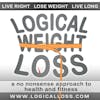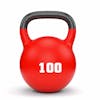
How To Make Sure You Don't Push To Hard

How To Make Sure You Don't Push To Hard

For most healthy adults, the Department of Health and Human Services recommends these exercise guidelines:
- Aerobic activity. Get at least 150 minutes a week of moderate aerobic activity — such as brisk walking, swimming or mowing the lawn — or 75 minutes a week of vigorous aerobic activity — such as running or aerobic dancing. You can also do a combination of moderate and vigorous activity, preferably spread throughout the course of a week.
- Strength training. Do strength training exercises at least twice a week. Consider free weights, weight machines or activities that use your own body weight — such as rock climbing or heavy gardening. The amount of time for each session is up to you.
That's 20 minutes of aerobic exercise a day. Weight training does not have to mean weights. You can use things like resistance bands that can be stored in a bag and much less likely to stub your toe. Bodylastics are quality resistance bands. There are two basic ways to measure exercise intensity:
- How you feel. Exercise intensity is a subjective measure of how hard physical activity feels to you while you're doing it — your perceived exertion. Your perceived level of exertion may be different from what someone else feels doing the same exercise. For example, what feels to you like a hard run can feel like an easy workout to someone who's more fit.
- Your heart rate. Your heart rate offers a more objective look at exercise intensity. In general, the higher your heart rate during physical activity, the higher the exercise intensity.
I use the Wahoo Blue HR Heart Rate Monitor for iPhone and Android
The basic way to calculate your maximum heart rate is to subtract your age from 220. For example, if you're 45 years old, subtract 45 from 220 to get a maximum heart rate of 175. This is the maximum number of times your heart should beat per minute while you're exercising. Once you know your maximum heart rate, you can calculate your desired target heart rate zone — the level at which your heart is being exercised and conditioned but not overworked. Here's how heart rate matches up with exercise intensity levels:
- Moderate exercise intensity: 50 to 70 percent of your maximum heart rate
- Vigorous exercise intensity: 70 to 85 percent of your maximum heart rate
How to determine your target zone
To determine your desired target heart rate zone, use an online calculator. Or, here's a simple way to do the math yourself. If you're aiming for a target heart rate of 70 to 85 percent, which is in the vigorous range, you would calculate it like this:
- Subtract your age from 220 to get your maximum heart rate.
- Multiple that number by 0.7 (70 percent) to determine the lower end of your target heart rate zone.
- Multiply your maximum heart rate by 0.85 (85 percent) to determine the upper end of your target heart rate zone.
It's important to note that maximum heart rate is just a guide. You may have a higher or lower maximum heart rate, sometimes by as much as 15 to 20 beats per minute. If you want a more definitive range, consider discussing your target heart rate zone with an exercise physiologist or a personal trainer. As always contact your Doctor before doing any exercise or training.
Supprt the show at www.logicalloss.com/support
Like The Show - Say Thank You!
If you find value in this show, you can say thank you by "Buying Dave a Coffee"
Weight Loss Challenge Spreadsheet
Some of us are motivated by a little competition, or we dreamed of being on a tv show like the Biggest Loser, well now you can create your own weight loss challenge using the weight loss challenge spreadsheet. This spreadsheet has done all the math and shows the participant's weight loss as a percentage of their body weight. Play solo or teams, it all in the spreadsheet.
Go to weightlosschallengesheet.com You lose the weight, we do the math.
New to Logical Weight Loss Podcast?
Here are some great episodes to start with.











